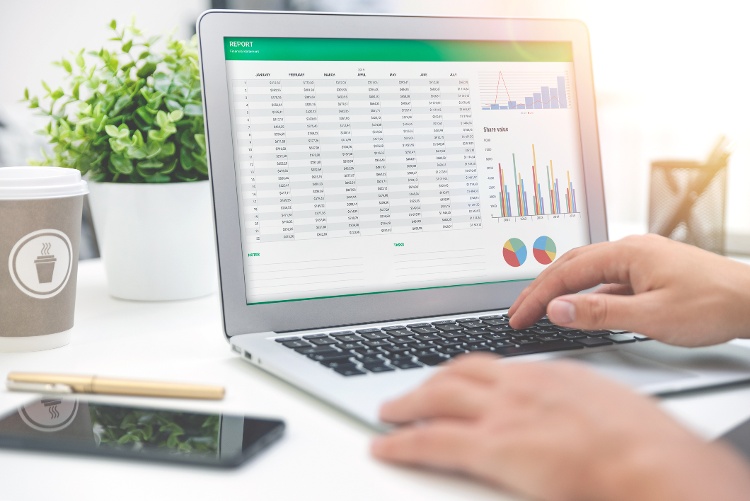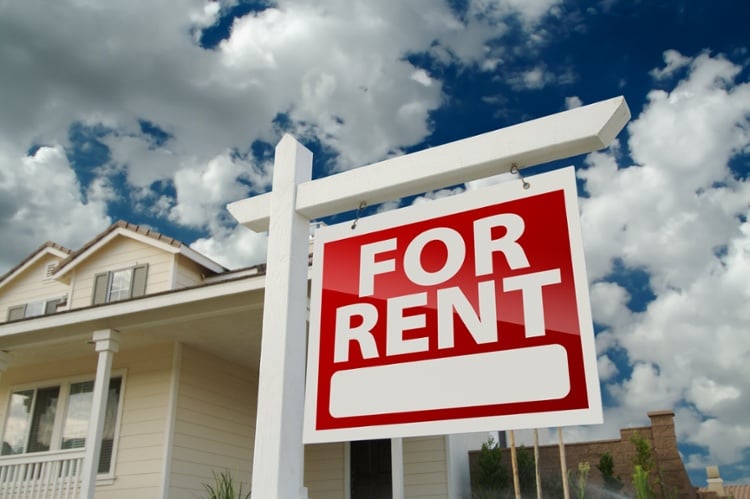When real estate investors buy a rental property what they are really purchasing is the rent roll or the gross rental income that the property generates.
At first glance that may seem like an odd concept, because we’re so used to thinking about single-family homes on a price-per-square-foot basis or small multifamily property on a price-per-unit basis.
But when you think about it, taking a hard look at the total rental income makes good investment sense. After all, without knowing exactly how much money is coming in every month from tenant rent payments, it’s impossible to accurately forecast the potential profitability of a rental property investment.
A rent roll is one of the easiest documents a real estate investor can create, and also one of the most important reports used by managers, investors, and sellers when the time comes to sell your rental property.
What is a Rent Roll?
A rent roll is an easy-to-read document that shows a rental property owner the tenant information, rents due, lease terms, late fees, and security deposits.
Unlike a P&L or cash flow statement, the rent roll focuses solely on the gross rental income collected and not the property operating expenses or mortgage payment.
.jpg?width=5616&name=iStock-1152061209%20(1).jpg)
Why a Rent Roll is Important
Gross rents collected provide the cash a rental property investor needs each month to pay the bills, the mortgage, and profit to the owner. It’s important to accurately identify the cash coming in each month so that the rent roll can accurately reflect the true income-producing potential of a rental property.
A rent roll reflects the past, current, and potential rental income of the property. People who use a rent roll include:
- Landlords and property managers to monitor the actual rent collected, and monitor tenants who are paying on time or paying the rent late.
- Buyers to help determine if and by how much the rents can be increased based on the market’s fair market rent for similar properties.
- Lenders use a rent roll to understand the past and future gross income a rental property generates and average occupancy length, and for making new loans for cash-out refinancing.
The main uses of a rent roll include:
- Snapshot view of gross rental income collected to compare projected incoming cash flow to the actual rents collected.
- Review past and current tenant and occupancy history such as length of occupancy, lease expiration dates, vacancy details, and time between tenant turns.
- If a lease is coming up for renewal, the landlord can reach out to the tenant to extend the lease or begin marketing the property for rent if the current tenant does not plan on extending.
- Conduct market research by comparing rent rolls of similar properties to one another to ensure that a rental property is valued correctly and that the current and projected rents are accurate and realistic.
- Research potential investments by evaluating the gross rental income of one property to other alternative rental property investments.
There are also a variety of financial metrics and real estate formulas that depend on an accurate gross income from the rent roll:
- Gross Yield compares the annual gross rent to the property price. $12,000 Gross Annual Rent / $100,000 Property Price = 12% Gross Yield
- Gross Rent Multiplier (GRM) is the inverse of the gross yield calculation and compares the property asking price to the gross annual rental income. $100,000 Property Price / $12,000 Gross Annual Rent = 8.3 GRM
- 50% Rule is used to quickly estimate operating expenses by multiplying the gross rent by 50%: $12,000 Gross Rent x 50% = $6,000 Estimated Annual Operating Expenses (excluding a mortgage)
Net Operating Income (NOI)
- Gross income is also used in the net operating income calculation (NOI) by subtracting operating expenses (except the mortgage payment) from the gross rental income.
- NOI is used in numerous other real estate formulas including cap rate, debt service coverage ratio (DSCR), cash on cash return, and return on investment (ROI).
- This means that if the gross income figure is off, an investor runs the risk of overestimating or underestimating the potential value of the rental property.

Information to Include in a Rent Roll
Rental property investors can easily create a rent roll using a spreadsheet software program such as Microsoft Excel, Google Sheets, LibreOffice Calc, or OpenOffice Calc.
The specific information on a rent roll can vary based on the property and the objectives of the individual investor, but generally includes the following information:
Identifying Information
Potential buyers and lenders will likely have several different properties they are viewing at the same time. The property information at the top of your rent roll document should make it easy for them to identify yours:
- Owner name
- Property name
- Property type
- Property address
- Property manager
Property Specifics
The rent roll spreadsheet should contain rows with the following information specific to the house or unit in a multifamily property:
- Unit
- Size (in square feet)
- Beds/Baths
- Tenant Name
- Monthly Rent
- Rent Collected
- Late Fees
- Other Rent (pets, parking)
- Security Deposit
- Lease Start Date
- Least End Date
- Lease Length
- Renewal Options
- Annual Increases (current tenant)
- Occupancy Length (how long tenant has rented)
- Additional Unit Information
- Additional Tenant Information
Rental Income
This section of the rent roll contains the total gross rent collected by month and by year for the property:
- Total Monthly Rent Collected
- Annual Rent Collected
Rent Roll Example for Single Family Rentals
Here’s a look at an excerpt from a sample rent roll for a couple that owns three single-family homes in Charlotte, North Carolina.
One tenant is new, one is “seasoned” with a 2-year occupancy length, and another tenant is on a month-to-month lease. Additional rental income includes monthly pet rent, extra monthly rent for roommates, and a late fee:
Click here to view and download the entire rent roll example
Free Downloadable Sample Rent Roll Template
We’ve also put together two fully-editable rent roll templates in both Excel and Google Sheets format:
Other Places to Find a Free Rent Roll Template
Here are some other good online resources to find a free rent roll template if you’d like to look at other some other examples:
- Template Archive offers 47 rent roll templates and forms for real estate investors.
- Sample Forms has more than 11 sample rent roll forms in PDF, Excel, and Word formats.
- Find Word Templates provides free rent roll templates that major lenders such as Chase, Wells Fargo, and Golden State Bank use.

Tips for Growing Your Rent Roll
As we mentioned at the beginning of this article, when real estate investors buy a rental property what they are really purchasing is the rent roll or the gross rental income that the property generates.
Sellers look for ways to grow the rent roll to help increase the sales price of their property, while buyers hope to grow the rent roll to increase the value of their investment once escrow closes.
Some of the best ways to grow your rent roll include:
Research
Conduct thorough market research to forecast if the market will favor landlords or tenants over the next 5-10 years. Look for statistics such as historical rent growth, percentage share of rental households, and population and job growth trends.
Market Rent
Prepare a rental market analysis to determine the fair market rent, then create marketing strategies and use rental listing websites to attract the best possible tenants as quickly as possible.
Cash Flow
Keep cash flow steady and tenant turnover low by utilizing online tenant screening services and free property management software to conduct thorough background checks, accept online rent payments and give tenants a way to make maintenance requests quickly and easily.
Property Manager
Hire a local property manager to handle tenant relations and the day-to-day details of running the property to build a good relationship with tenants who will renew their lease year after year.
Closing Thoughts
A rent roll is a surprisingly powerful document despite being so easy to create. Rental property owners, managers, lenders, and buyers use a rent roll to understand the gross cash flow being generated and the possible opportunities for increasing property value by growing the rent roll.
Using a good rent roll template can help to improve gross rents, increase long-term yields, and identify new rental properties that may offer the highest returns.









